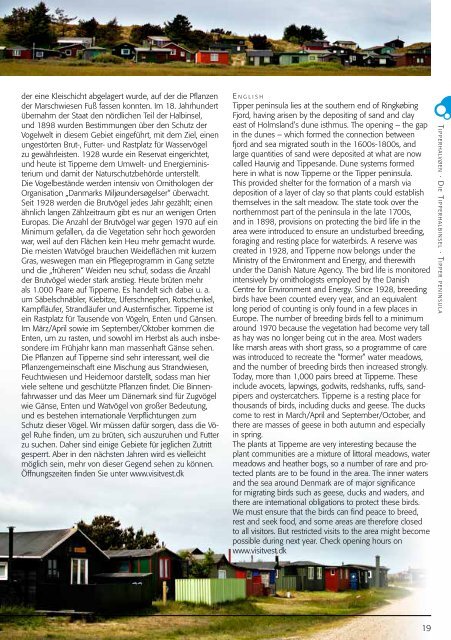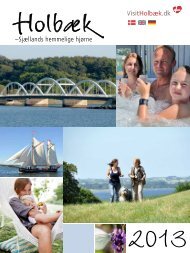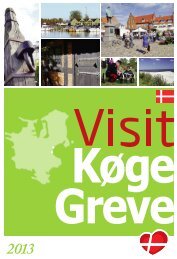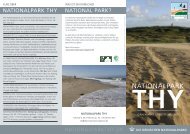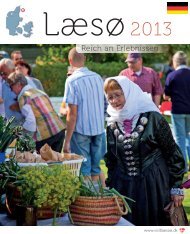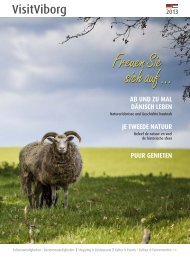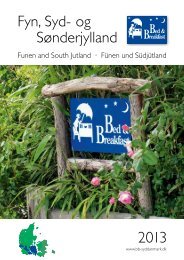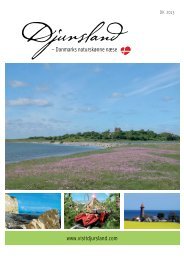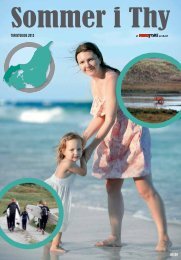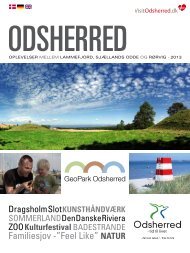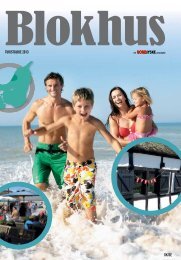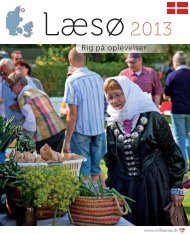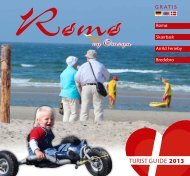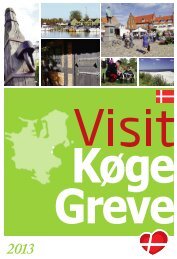Create successful ePaper yourself
Turn your PDF publications into a flip-book with our unique Google optimized e-Paper software.
der eine Kleischicht abgelagert wurde, auf der die Pflanzen<br />
der Marschwiesen Fuß fassen konnten. Im 18. Jahrhundert<br />
übernahm der Staat den nördlichen Teil der Halbinsel,<br />
und 1898 wurden Bestimmungen über den Schutz der<br />
Vogelwelt in diesem Gebiet eingeführt, mit dem Ziel, einen<br />
ungestörten Brut-, Futter- und Rastplatz für Wasservögel<br />
zu gewährleisten. 1928 wurde ein Reservat eingerichtet,<br />
und heute ist Tipperne dem Umwelt- und Energieministerium<br />
und damit der Naturschutzbehörde unterstellt.<br />
Die Vogelbestände werden intensiv von Ornithologen der<br />
Organisation „Danmarks Miljøundersøgelser“ überwacht.<br />
Seit 1928 werden die Brutvögel jedes Jahr gezählt; einen<br />
ähnlich langen Zählzeitraum gibt es nur an wenigen Orten<br />
Europas. Die Anzahl der Brutvögel war gegen 1970 auf ein<br />
Minimum gefallen, da die Vegetation sehr hoch geworden<br />
war, weil auf den Flächen kein Heu mehr gemacht wurde.<br />
Die meisten Watvögel brauchen Weideflächen mit kurzem<br />
Gras, weswegen man ein Pflegeprogramm in Gang setzte<br />
und die „früheren“ Weiden neu schuf, sodass die Anzahl<br />
der Brutvögel wieder stark anstieg. Heute brüten mehr<br />
als 1.000 Paare auf Tipperne. Es handelt sich dabei u. a.<br />
um Säbelschnäbler, Kiebitze, Uferschnepfen, Rotschenkel,<br />
Kampfläufer, Strandläufer und Austernfischer. Tipperne ist<br />
ein Rastplatz für Tausende von Vögeln, Enten und Gänsen.<br />
Im März/April sowie im September/Oktober kommen die<br />
Enten, um zu rasten, und sowohl im Herbst als auch insbesondere<br />
im Frühjahr kann man massenhaft Gänse sehen.<br />
Die Pflanzen auf Tipperne sind sehr interessant, weil die<br />
Pflanzengemeinschaft eine Mischung aus Strandwiesen,<br />
Feuchtwiesen und Heidemoor darstellt, sodass man hier<br />
viele seltene und geschützte Pflanzen findet. Die Binnenfahrwasser<br />
und das Meer um Dänemark sind für Zugvögel<br />
wie Gänse, Enten und Watvögel von großer Bedeutung,<br />
und es bestehen internationale Verpflichtungen zum<br />
Schutz dieser Vögel. Wir müssen dafür sorgen, dass die Vögel<br />
Ruhe finden, um zu brüten, sich auszuruhen und Futter<br />
zu suchen. Daher sind einige Gebiete für jeglichen Zutritt<br />
gesperrt. Aber in den nächsten Jahren wird es vielleicht<br />
möglich sein, mehr von dieser Gegend sehen zu können.<br />
Öffnungszeiten finden Sie unter www.visitvest.dk<br />
e n g l i s h<br />
Tipper peninsula lies at the southern end of <strong>Ringkøbing</strong><br />
<strong>Fjord</strong>, having arisen by the depositing of sand and clay<br />
east of Holmsland’s dune isthmus. The opening – the gap<br />
in the dunes – which formed the connection between<br />
fjord and sea migrated south in the 1600s-1800s, and<br />
large quantities of sand were deposited at what are now<br />
called Haurvig and Tippesande. Dune systems formed<br />
here in what is now Tipperne or the Tipper peninsula.<br />
This provided shelter for the formation of a marsh via<br />
deposition of a layer of clay so that plants could establish<br />
themselves in the salt meadow. The state took over the<br />
northernmost part of the peninsula in the late 1700s,<br />
and in 1898, provisions on protecting the bird life in the<br />
area were introduced to ensure an undisturbed breeding,<br />
foraging and resting place for waterbirds. A reserve was<br />
created in 1928, and Tipperne now belongs under the<br />
Ministry of the Environment and Energy, and therewith<br />
under the Danish Nature Agency. The bird life is monitored<br />
intensively by ornithologists employed by the Danish<br />
Centre for Environment and Energy. Since 1928, breeding<br />
birds have been counted every year, and an equivalent<br />
long period of counting is only found in a few places in<br />
Europe. The number of breeding birds fell to a minimum<br />
around 1970 because the vegetation had become very tall<br />
as hay was no longer being cut in the area. Most waders<br />
like marsh areas with short grass, so a programme of care<br />
was introduced to recreate the “former” water meadows,<br />
and the number of breeding birds then increased strongly.<br />
Today, more than 1,000 pairs breed at Tipperne. These<br />
include avocets, lapwings, godwits, redshanks, ruffs, sandpipers<br />
and oystercatchers. Tipperne is a resting place for<br />
thousands of birds, including ducks and geese. The ducks<br />
come to rest in March/April and September/October, and<br />
there are masses of geese in both autumn and especially<br />
in spring.<br />
The plants at Tipperne are very interesting because the<br />
plant communities are a mixture of littoral meadows, water<br />
meadows and heather bogs, so a number of rare and protected<br />
plants are to be found in the area. The inner waters<br />
and the sea around Denmark are of major significance<br />
for migrating birds such as geese, ducks and waders, and<br />
there are international obligations to protect these birds.<br />
We must ensure that the birds can find peace to breed,<br />
rest and seek food, and some areas are therefore closed<br />
to all visitors. But restricted visits to the area might become<br />
possible during next year. Check opening hours on<br />
www.visitvest.dk<br />
19<br />
t i p p e r h a lvø e n · Di e ti p p e r h a l b i n s e l · ti p p e r p e n i n s u l a


